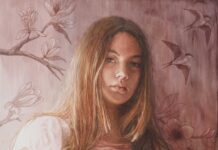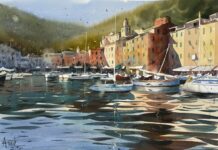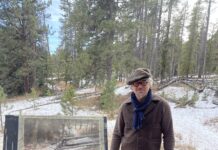by Jeff Mathison
“I have always enjoyed painting both landscapes and the figure in watercolor. My ‘Free Spirit’ series combines the two, depicting the human spirit in harmony with Nature.
“These paintings begin with models who are comfortable posing for photos on rocks and mossy logs, or dipping into cold mountain streams. Back in my studio, I look over the shots, and choose an image that tells a simple story, as well as features good lighting and composition.
“On a print, I mark off a half-inch grid on the margins. I then create a proportional grid on the margins of my larger watercolor paper (Arches 140-lb. cold pressed). Next, I use a homemade ruler to transfer the key points from the print. With those marks to guide me, I fill in the rest of the drawing.
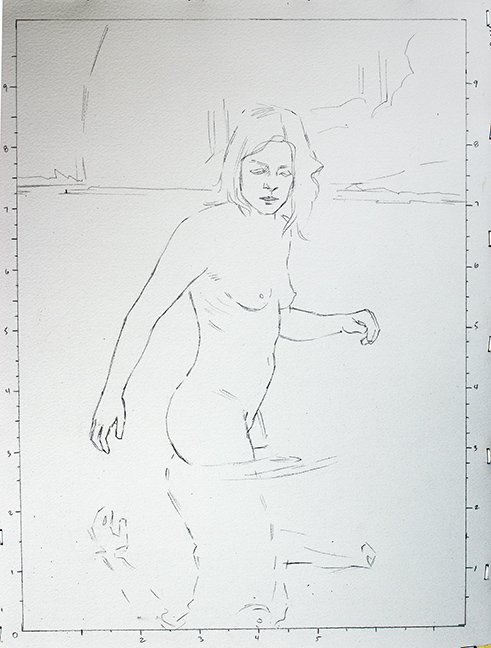
“When I’m happy with the drawing, I mix a load of fresh paint in my favorite muffin tin-style palette. My current color choices include ultramarine blue, hansa yellow light, raw sienna, quinacridone red, and cobalt violet, plus some custom mixes of greens and dark blues.
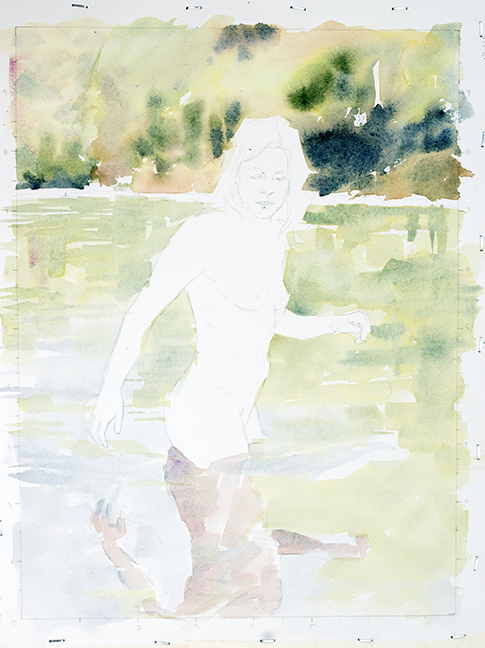
“I take a deep breath, and begin painting with light tones, using similar colors all over the background. I work fast, dancing the brush around areas that need to stay white.
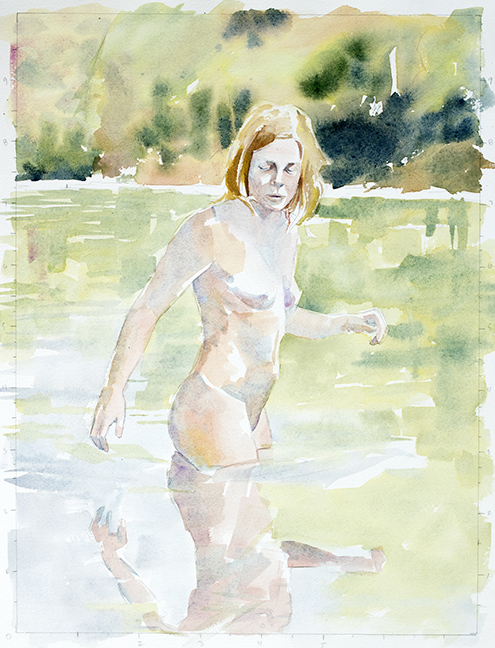
“Sometimes, the first strokes — if they are rich and fresh — may be all I need. Most often, I will apply additional glazes of color to deepen the value and add complexity.
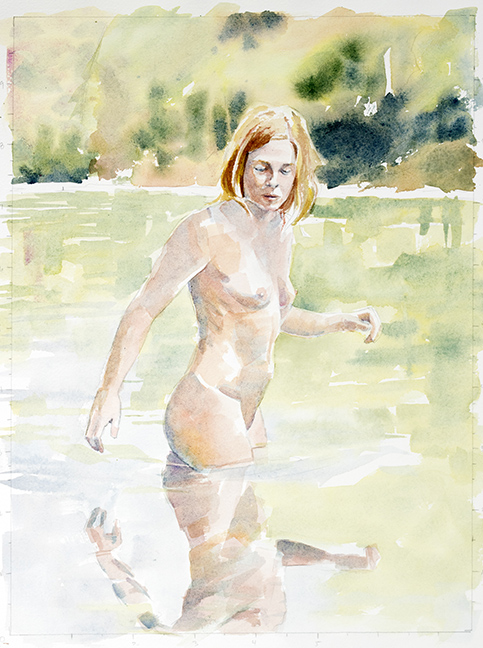
“I am most confident about painting the figure, so I make sure I like the background before I proceed with the flesh tones. I use a mix of cobalt violet and cobalt teal blue as my cool undertone for shadow areas. A mix based on buff titanium goes on while the blue is still wet, allowing the colors to blend naturally. Usually, the skin will need a second glaze to attain the right depth of color and value.
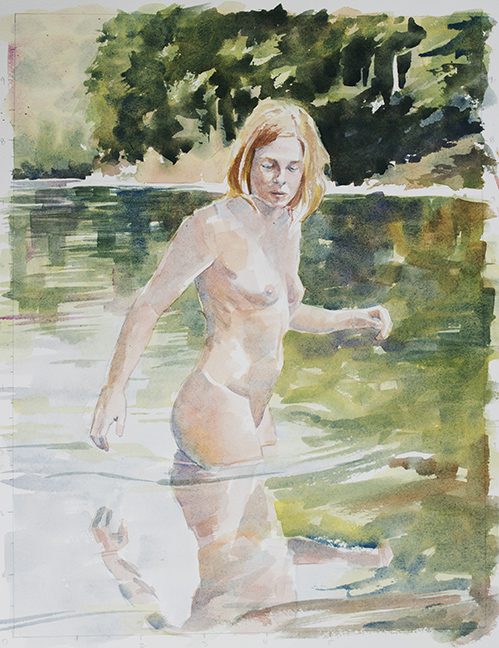
“Total painting time is often 8 hours or less, but each piece requires days of idle time, where I study it or just give it passing glances until I have spotted any mistakes.
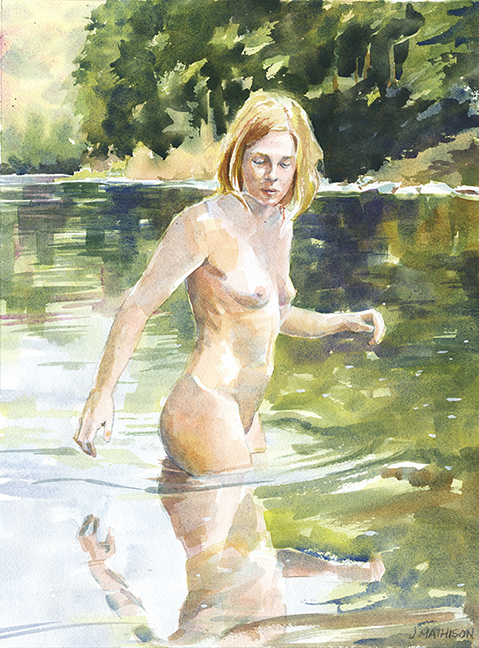
“I use a scanner to make the best possible record of my paintings. I take multiple scans and piece them together in Photoshop. I use Instagram to get my finished art out to the world.” Instagram: artbyjeffm
For more inspiring stories like this one, sign up for our free weekly e-newsletter.

